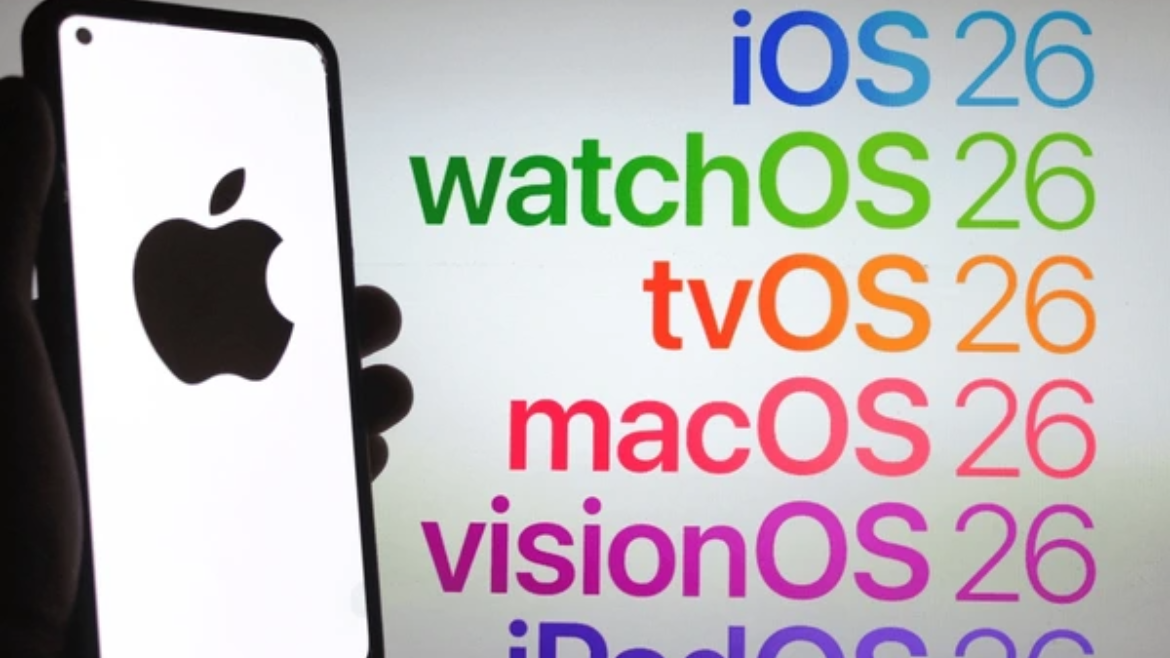What Are Apple Developer Betas?
A developer beta is a pre-release version of Apple’s operating systems, made available exclusively to members of the Apple Developer Program. These betas are released ahead of public betas and the final public release, giving developers time to test their apps, explore new APIs, and provide feedback to Apple.
Developer betas are not intended for the general public. They may contain bugs, unfinished features, and performance issues. Apple’s goal is to gather feedback and ensure a smooth launch for the broader audience later in the year.
Why Does Apple Release Developer Betas?
Apple’s developer betas serve several important purposes:
1. App Compatibility
Developers can update their apps to ensure compatibility with new OS features and APIs.
2. Bug Detection
Early testing helps identify bugs and issues that Apple can fix before the public release.
3. Feedback Loop
Developers can suggest improvements or report usability concerns.
4. Ecosystem Readiness
By launch day, the App Store is full of apps that work seamlessly on the new OS.
Who Can Access Developer Betas?
To access Apple’s developer betas, you must enroll in the Apple Developer Program, which costs $99 USD per year. This program is open to individuals, organizations, and educational institutions.
Note: While some betas may leak or be shared unofficially, downloading them from non-Apple sources is risky and violates Apple’s terms of service.
How to Enroll in the Apple Developer Program
Sign in with your Apple ID.
Fill out the required information and pay the annual fee.
Once approved, you’ll have access to developer resources, betas, and support.
Supported Devices for iOS 26, iPadOS 26, and macOS Tahoe
1. iOS 26
iPhone 11 and newer
iPhone SE (3rd generation and later)
2. iPadOS 26
iPad Air (3rd generation and later)
iPad (8th generation and later)
iPad mini (6th generation and later)
All iPad Pro models with M1, M2, or M3 chips
3. macOS Tahoe
All Macs with Apple Silicon (M1, M2, M3)
Select Intel Macs (iMac 2020+, MacBook Pro 2019+, Mac mini 2020+, Mac Studio 2022+, Mac Pro 2019+)
Tip: Always check Apple’s official compatibility list before attempting installation.
How to Install Developer Betas Safely
1. Step 1: Backup Your Device
Before installing any beta, back up your data. Use iCloud, Finder (on Mac), or Time Machine for Macs. This ensures you can restore your device if something goes wrong.
2. Step 2: Download the Beta Profile
Sign in to the Apple Developer portal.
Download the relevant beta profile for your device.
3. Step 3: Install the Beta
For iOS/iPadOS
On your device, go to Settings > General > Software Update.
Tap Beta Updates and select the developer beta.
Download and install.
For macOS
Open System Settings > General > Software Update.
Click Beta Updates and select the macOS Tahoe Developer Beta.
Download and install.
4. Step 4: Follow On-Screen Instructions
Your device will restart and begin the installation process. This may take some time.
Major New Features in iOS 26
Apple’s iOS 26 is packed with innovative features, many powered by on-device AI and designed to make the iPhone smarter and more personal.
1. Liquid Glass Design
The new “Liquid Glass” interface brings dynamic transparency, vibrant colors, and a more immersive experience throughout the system.
2. Apple Intelligence
On-Device AI
Summarize texts, generate images, and automate tasks without sending data to the cloud.
Smarter Siri
Context-aware, faster, and more conversational, with better integration across apps.
3. Customizable Alarms
Set snooze intervals per alarm, ranging from 1 to 15 minutes, for more flexible wake-up routines.
4. Live Call Screening and Translation
Real-time call screening for unknown numbers.
Live translation in the Phone and Messages apps.
5. Enhanced Shortcuts
Shortcuts now support AI-driven actions, allowing users to automate complex workflows with natural language.
6. Genmoji
Create custom emojis using AI, blending different elements for unique expressions.
Major New Features in iPadOS 26
iPadOS 26 focuses on making the iPad a true productivity powerhouse, bridging the gap between tablet and laptop.
1. Advanced Multitasking
Resizable Windows: Freely arrange and resize app windows, similar to macOS.
Stage Manager Improvements: Smoother transitions and better external display support.
2. Files App Upgrades
Mac-style list views
Folder color and emoji customization
Folders in the Dock for quick access
3. Preview App
A new app for editing PDFs and images, with full Apple Pencil support and advanced markup tools.
4. Genmoji and Image Playground
AI-powered emoji and image generation tools for creative expression.
5. Background Tasks
Support for background audio/video capture and Live Activities in third-party apps.
Major New Features in macOS Tahoe
macOS Tahoe brings the Mac closer to iOS and iPadOS in both design and intelligence.
1. Unified Liquid Glass Interface
Translucent menu bars, dynamic icons, and a visually cohesive experience across all Apple devices.
2. Spotlight Redesign
Perform actions directly from Spotlight (send emails, create notes, control smart home devices).
Smarter file search and previews.
3. Phone App for Mac
Make and receive calls, access voicemails, and manage contacts directly from your Mac.
4. Live Activities in Menu Bar
Track flights, deliveries, and other real-time events right from the menu bar.
5. Apple Intelligence Extensions
Live translation
Genmoji and Image Playground
Intelligent Shortcuts
6. New Journal App
A cross-device journaling app with map views, multiple journals, and rich text support.
What’s New for Developers?
Apple’s developer betas aren’t just about end-user features—they also introduce powerful new tools and frameworks for app creators.
1. Swift and SwiftUI Enhancements
Improved performance and stability
New UI components and layout options
2. Expanded APIs
Deeper system integration for AI features
Enhanced background task management
New widgets and Live Activities APIs
3. Testing and Debugging Tools
Xcode 17 beta with improved simulators and debugging tools
Better crash reporting and analytics
4. Privacy and Security
New privacy controls for sensitive data
Enhanced app sandboxing
Risks and Precautions of Installing Betas
While developer betas are exciting, they come with significant risks:
1. Bugs and Instability
Expect crashes, freezes, and unexpected behavior.
2. App Incompatibility
Some third-party apps may not work until updated.
3. Battery Drain
Betas often reduce battery life due to unoptimized code.
4. Data Loss
Bugs can corrupt files or cause data loss—backup is essential.
5. Limited Support
Apple’s support for beta issues is limited to developers.
Recommendation: Only install betas on secondary devices or test machines.
Troubleshooting and Rolling Back
If you encounter issues:
1. For iOS/iPadOS
Restore from Backup
Connect to Finder (Mac) or iTunes (PC) and restore your device.
DFU Mode
In severe cases, use Device Firmware Update (DFU) mode to reinstall the stable release.
2. For macOS
Time Machine Restore
Use Time Machine to revert to a previous backup.
Reinstall macOS
Use macOS Recovery to reinstall the latest stable version.
Note: Rolling back erases data added since the last backup.
Tips for Reporting Bugs and Feedback
Apple relies on developer feedback to improve its software. Use the Feedback Assistant app (pre-installed on beta devices) to:
Report bugs with clear steps to reproduce
Attach screenshots or screen recordings
Suggest improvements or UI tweaks
Quality feedback helps Apple deliver a better final product.
Conclusion
Apple’s developer betas for iOS 26, iPadOS 26, and macOS Tahoe are a thrilling preview of what’s next for the Apple ecosystem. They offer powerful new features, smarter AI, and a more unified experience across devices. For developers, they’re a crucial opportunity to prepare apps and provide feedback. For enthusiasts, they’re a chance to explore the cutting edge—just remember to proceed with caution.
If you’re considering installing a developer beta, make sure your data is backed up, use a secondary device, and be ready for some bumps along the way. And if you’re just here for the news, stay tuned—these features will be coming to everyone later this year!
15. Frequently Asked Questions (FAQs)
Q1: Can I install the developer beta if I’m not a developer?
Officially, you must be a registered developer. Installing unofficially is risky and not recommended.
Q2: When will the public beta be available?
Apple usually releases public betas in July, about a month after WWDC.
Q3: Can I go back to the previous version after installing the beta?
Yes, but you’ll need a backup made before installing the beta.
Q4: Will my favorite apps work on the beta?
Some may not work until updated for the new OS.
Q5: How often are beta updates released?
Apple typically releases new beta versions every 1–2 weeks.
Q6: Is my data safe on the beta?
Betas can be unstable, so always back up your data before installing.
Disclaimer
This content has been carefully developed through extensive research and supported by AI technology to ensure clarity and accuracy. Each point has been reviewed and refined to offer practical, relevant, and reliable information. We’ve made every effort to deliver something truly valuable for your learning and research.
Wishing you an insightful reading experience!















0 Comments